Generation
Introduction
Utility Generation plants have extensive, complex processes and equipment for generating electricity and delivering it to transmission lines. To remain successful and profitable, these plants must produce high quality electricity as efficiently as possible. Some of the challenges facing Utility Generation are:
- Accurate real time data from metering of utility transformers, breakers, and other plant equipment and the ability to communicate the metering data to SCADA and other plant management applications.
- Support for synchrophasor applications.
- Support for substation automation.
Real Time Metering
To keep track of energy used by plant equipment such as transformers and breakers, and to be alerted to any problems with the equipment, generation plant operators need reliable and accurate metering. The utility metering data must also be communicated to the power management system utilized by the plant.
EIG’s extensive line of power and energy meters offer full utility metering capability as well as advanced power quality analysis. EIG’s panel meters can easily be installed into existing cutouts for a simple retrofit. In addition to offering both real time and logging of all power and energy parameters, the meters provide load aggregation/universal metering to aggregate or accumulate different loads with pulse inputs so utility products such as gas and water can also be accumulated. The meters also offer relay outputs for control applications, for example, when monitoring turbines.
For integration of utility metering data with existing SCADA and other energy management systems, EIG meters have extensive communication options. Depending on the specific EIG meter, the following communication modes are available:
|
|
Depending on the specific mode, the following communication protocols are supported:
|
|
*LTE is a trademark of ETSI.
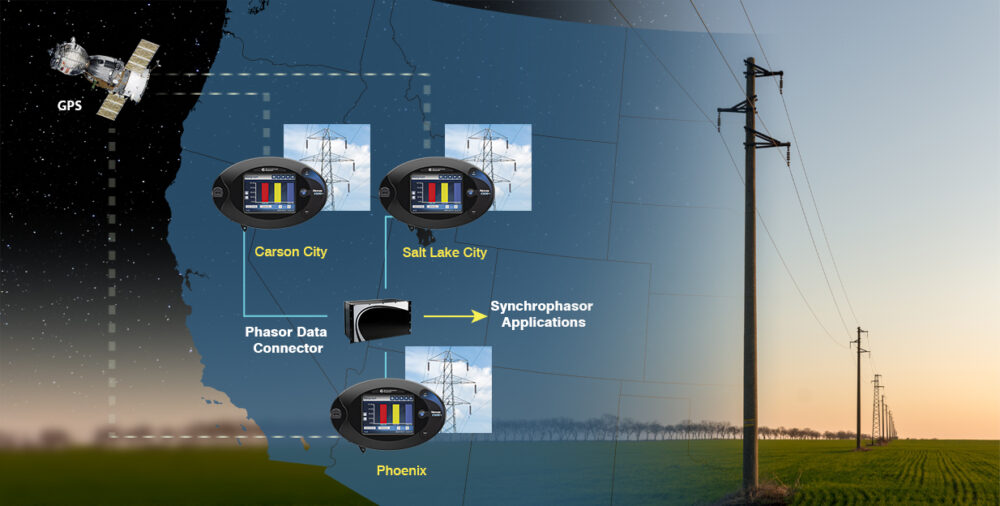
Support for Synchrophasor Applications
For generation plants that utilize synchrophasor applications for their transformer substations on both ends of the transformer switching stations, EIG also offers the Nexus® 1500+ power quality meter with synchrophasor support that meets the IEEE C37.118-1-2011/.1a-2014 standard. The meter can be configured as a PMU to supply synchrophasor data to the main application. As a PMU, the Nexus® 1500+ meter:
|
|

Substation Automation Support
To support substation automation, EIG’s power and energy meters support Modbus serial, Modbus over Ethernet, and DNP 3.0 for substation communication. Many EIG meters also support IEC 61850 for seamless integration into substation automation applications. The Nexus® 1500+ meter also offers GOOSE reporting that can be used to capture waveform events from many different areas of the electrical grid. This capability supports post-event analysis, as well as real time awareness of conditions on the grid.
Transmission
Introduction
Utility Transmission systems must take the electricity produced by generation plants, increase the voltage, and transmit it, often over thousands of miles, to distribution points. While doing so, they must successfully integrate with transmission substations and utility tie lines. Challenges facing Utility Transmission include:
- Accurate revenue metering for transmission substations and utility tielines.
- Communication of metering data to SCADA systems.
- Support for synchrophasor applications.
- Substation automation support.
High Accuracy Metering
EIG offers advanced power and energy meters that meet the highest standards of energy management accuracy. Use our meters to digitize information from substations and critical points on the transmission lines. This information provides a voltage reference for all metered points that is easily communicated to the transmission SCADA or other systems. This voltage reference information is crucial for maintaining transmission system voltage reliability.
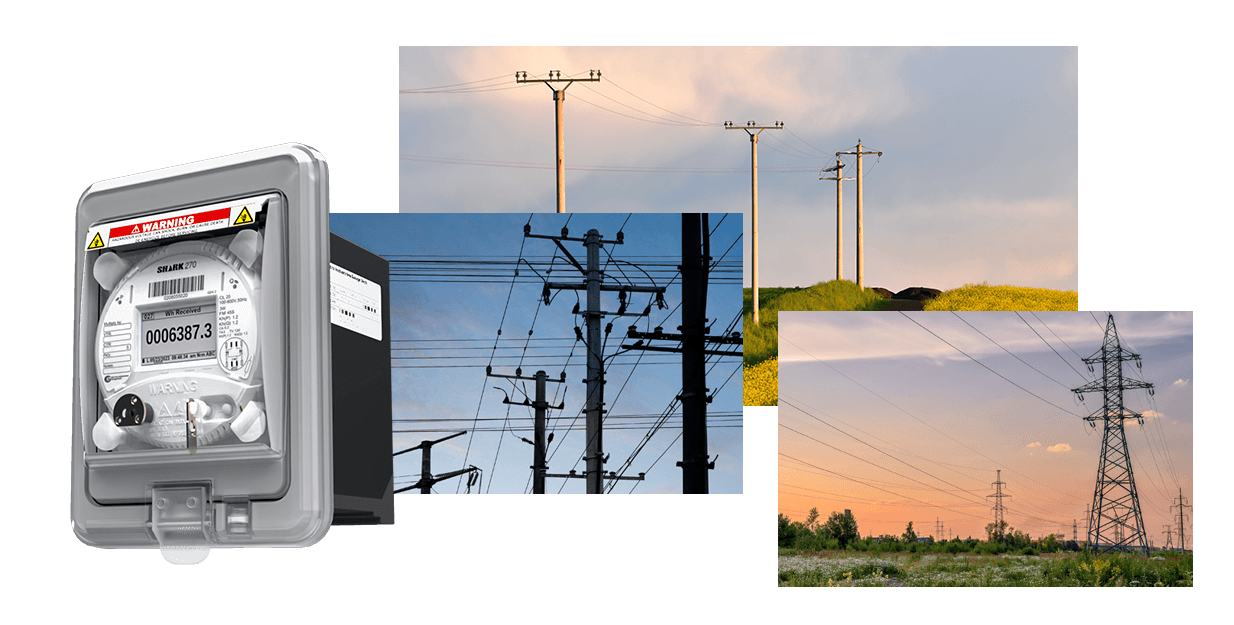

Communication to SCADA Systems
Additionally, EIG meters have extensive communication options for integrating their data into existing SCADA systems. Depending on the specific EIG meter, the following communication modes are available:
|
|
Depending on the specific mode, the following communication protocols are supported:
|
|
|
|
|
|
|
|
|
|
*LTE is a trademark of ETSI.

HMIPQA+™ SCADA Solution
For transmission substations that do not yet have a SCADA system, EIG offers the HMIPQA+™ SCADA solution. It is easily scalable to fit your requirements with highly customizable and intuitive graphical displays of both energy metering and other commodity data. It seamlessly puts the right tools at the operator’s fingertips for informed energy management decisions. Capabilities include:
|
|

Support for Synchrophasor Applications
For transmission systems that utilize synchrophasor applications for their transformer substations on both ends of the transmission lines, EIG offers the Nexus® 1500+ power quality meter with synchrophasor support that meets the IEEE C37.118-1-2011/.1a-2014 standard. The meter can be configured as a PMU to supply synchrophasor data to the main application. As a PMU, the Nexus® 1500+ meter:
|
|
Substation Automation Support
To support transmission substation automation, EIG’s power and energy meters support Modbus serial, Modbus over Ethernet, and DNP 3.0 for substation communication. Many EIG meters also support IEC 61850 for seamless integration into substation automation applications. The Nexus® 1450 and 1500+ meters also offer GOOSE reporting that can be used to capture waveform events from many different areas of the electrical grid. This capability supports post-event analysis, as well as real time awareness of conditions on the grid.

Distribution
Introduction
Utility Distribution systems must ensure that the electricity transmitted to them is delivered to the end user at the regulated voltage. Equally important, they also must make sure that the delivery of electricity is consistent and that its power quality remains at the required level. Challenges facing Utility Distribution include:
- Accurate revenue metering for critical customers and distribution-connected renewables.
- Power quality analysis to maintain required voltage.
- SCADA software for distribution substations.
- Substation automation support.
Revenue Metering for Critical Customers
To help utilities service their critical customers and any distribution-connected renewable energy sources, EIG offers advanced revenue meters that meet the highest standards for energy management accuracy. Revenue metering capabilities include full four quadrant metering, energy load profiling with the ability to log virtually unlimited historical trending, transformer and line loss compensation for iron/copper and total substation losses, and CT/PT compensation to correct for errors in current and voltage transformers. Additionally, EIG’s revenue meters provide load aggregation/universal metering to aggregate or accumulate different loads with pulse inputs so utility products such as gas and water can also be accumulated.


Power Quality Analysis
Distribution operators must ensure that the power they distribute meets the requirements of both their customers and government regulations. They also need to make sure any distribution line-connected renewables are not injecting harmonics and/or voltage variability into the distribution lines. To answer these challenges, the distribution system needs comprehensive power quality metering together with alarm capability.
EIG’s advanced power quality (PQ) meters offer unrivalled PQ analytics and accordingly are certified to the IEC 61000-4-30 Class A Edition 3 standard for PQ meters. Capabilities include up to 1024 samples/cycle waveform recording at 16-bit resolution and transient capture at 50 MHz sampling speed. The meters have limit alarms programming on all measured parameters, for example harmonics and voltage, to dynamically alert operators when conditions arise that need their attention. They offer real time power and energy measurements, harmonics, THD and TDD, and support power quality reporting, including CBEMA and SEMI F47 support.
Depending on the specific mode, the following communication protocols are supported:
- Waveform analysis.
- Certified Flicker and Harmonics measurement.
- Alarms on exceeded limits.
- Voltage reliability measurements.
- EN 50160 Reporting.
- Limit controls using multi-level programming logic.
- Status input triggers.

SCADA Software for Distribution Substations
EIG’s HMIPQA+™ application is a next generation SCADA solution. Another key point, is that is easily scalable to fit your requirements with highly customizable and intuitive graphical displays of both energy metering and other commodity data. It seamlessly puts the right tools at the operator’s fingertips for informed energy management decisions. Capabilities include:
|
|
For distribution customers with existing SCADA systems, EIG meters have extensive communication options for integration into those systems. Depending on the specific EIG meter, the following communication modes are available:
|
|
|
|
|
|
Depending on the specific mode, the following communication protocols are supported:
|
|
|
|
|
|
|
|
|
|
*LTE is a trademark of ETSI.
Substation Automation Support
To support distribution substation automation, EIG’s power and energy meters support Modbus serial, Modbus over Ethernet, and DNP 3.0 for substation communication. Additionally, many EIG meters also support IEC 61850 for seamless integration into substation automation applications. The Nexus® 1450 and 1500+ meters also offer GOOSE reporting that can be used to capture waveform events from many different areas of the electrical grid. This capability supports post-event analysis, as well as real time awareness of conditions on the grid.

Renewables
Introduction
Renewable energy sources such as solar and wind farms offer both opportunities and challenges for the traditional electrical grid. On one hand, by generating energy from renewable sources they help to lower carbon emissions. They also offer additional power sources to help meet ever increasing demands for electricity. For traditional utilities, however it is important to realize that they present challenges, especially for transmission and distribution. Consequently, these challenges must be addressed for successful integration of renewables into the grid.
Challenges arising from renewables are:
- Accurate metering and power quality analysis to monitor voltage compatibility.
- Revenue metering for verification of energy consumed and transferred.
- Integration of renewables data into utility SCADA applications.
- Supporting synchrophasor applications.

Accurate Metering and Power Quality Analysis to Monitor Voltage Compatibility
Utilities must ensure voltage compatibility between renewable energy sources and the grid voltage. Additionally, power factor, frequency, and harmonics are critical parameters for electrical utilities to monitor to maintain power reliability. High-accuracy revenue and power quality meters address both the need for ensuring compatibility and maintaining power quality.
Electrical utilities are mandated to keep their voltage levels within a specified range. For example, to be compatible with the utility’s voltage requirements, the solar installation must inject current in such a way that it doesn’t affect the voltage in the distribution line, e.g., cause a rise in voltage. Being able to monitor the voltage and current characteristics in real time allows utilities to ensure voltage compatibility.
Since solar-generated energy is DC, inverters are used to change the current to the AC that the grid uses. However, older inverters can add harmonics to the grid, consequently lessening power quality and reliability. Meters that provide real time power quality data at the point of delivery can be used to monitor and ensure that harmonics are not being introduced to the grid by renewable sources. Limit alarms set on voltage levels, harmonic magnitudes, and power factor can enable utilities to take immediate action, e.g., stopping the renewable source from adding current if the grid voltage is in danger of rising too high or if power factor is being negatively affected.

Revenue Metering for Verification of Energy Consumed and Transferred
When renewables such as solar are connected to the distribution grid, they can both deliver energy to the grid and receive energy from it, depending on factors such as the time of day, when the sun isn’t shining and when there is not enough stored energy for their system. Both receiving and delivering must be monitored by high accuracy revenue metering, to ensure proper compensation for both the utility and the renewable energy operation. Placing a revenue meter on both the renewables’ feeder meter and recloser and the utility’s feeder meter and recloser allows the usage data to be reconciled. Additionally, there are contractual limits on the amount of energy that can be delivered from a renewable source and the quality of that energy, as discussed previously. A specific measure that renewables would want to monitor is VARs, since utilities may pay them for VARs they inject into the system. On the other hand, if there are too many voltage sags and swells that the utility believes are caused by the renewable source, they will drop the renewable connection. Metering data can show how often the renewables have been dropped and whether the utility’s restriction was appropriate. If it was not, the renewable operation may be entitled to compensation from the utility. In the case of wind farms, most of which are connected to transmission lines, the wind farm operators receive tax credits based on the amount of energy generated per site. This is a definite incentive for them to employ accurate metering.
EIG offers advanced revenue meters that meet the highest standards for energy management accuracy. Revenue metering capabilities include full four quadrant metering, energy load profiling with the ability to log virtually unlimited historical trending, transformer and line loss compensation for iron/copper and total substation losses, and CT/PT compensation to correct for errors in current and voltage transformers.
Integration of Renewables Data into Utility SCADA Applications
For utilities with existing SCADA and other energy management systems, EIG meters have extensive communication options for integration into those systems. Depending on the specific EIG meter, the following communication modes are available:
|
|
Depending on the specific mode, the following communication protocols are supported:
|
|
*LTE is a trademark of ETSI.

Supporting Synchrophasor Applications
For renewables-connected utility distribution and transmission systems that utilize synchrophasor applications, EIG offers the Nexus® 1500+ power quality meter with synchrophasor support that meets the IEEE C37.118-1-2011/.1a-2014 standard. The meter can be configured as a PMU to supply synchrophasor data to the main application. As a PMU, the Nexus® 1500+ meter:
|
|
Utility Products
Utility Products
Nexus® 1500+ meter | |
|---|---|
 | Power Quality AnalyzerOrdering Part #: Nexus1500+-D2-60-20-V5-485P-NTRJ-6RO1-6RO1 Sychrophasor Application SupportOrdering Part #: Nexus1500+-D2-60-20-V6-485P-NTRJ-X-X |
Nexus® 1450 meter | |
|---|---|
 | Power Quality Analyzer, IEC 61850Ordering Part #: Nexus1450-D2-60-V2 |
Shark® 270 meter | |
|---|---|
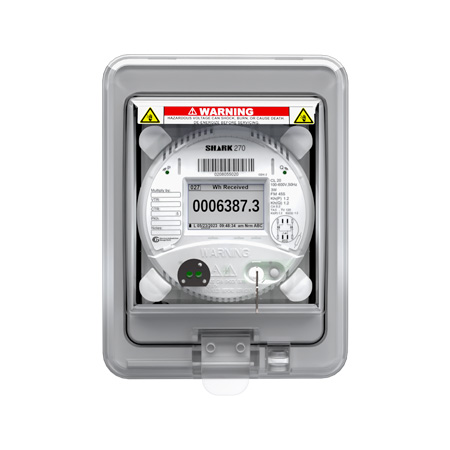 | Revenue MeteringOrdering Part #: Shark270-SWB3-60-2-V2-S-INP100S-X IEC 61850Ordering Part #: Shark270-SWB3-60-2-V3-S-INP100S-INP300S |
Shark® 250 meter | |
|---|---|
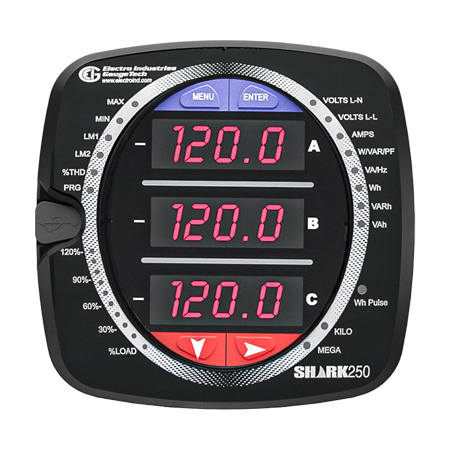 | Power Quality Monitoring, Alarm/Limits, Revenue Metering, and SCADA CommunicationOrdering Part #: Shark250-60-10-V2-D2-INP100S-INP100S IEC 6850Ordering Part #: Shark250-60-10-V2-D2-INP100S-INP300S-X Pulse Counting and Load AggregationOrdering Part #: Shark250-60-10-V2-D2-INP100S-PO1S-X Control ApplicationsOrdering Part #: Shark250-60-10-V2-D2-INP100S-RO1S-X |
HMIPQA+™ – Next Generation SCADA Solution | |
|---|---|
 | Simple, scalable, fully customizable application with open connectivity and multi-protocol supportOrdering Part #: Contact EIG sales for ordering information. |
Downloads
Downloads
Solutions Guides
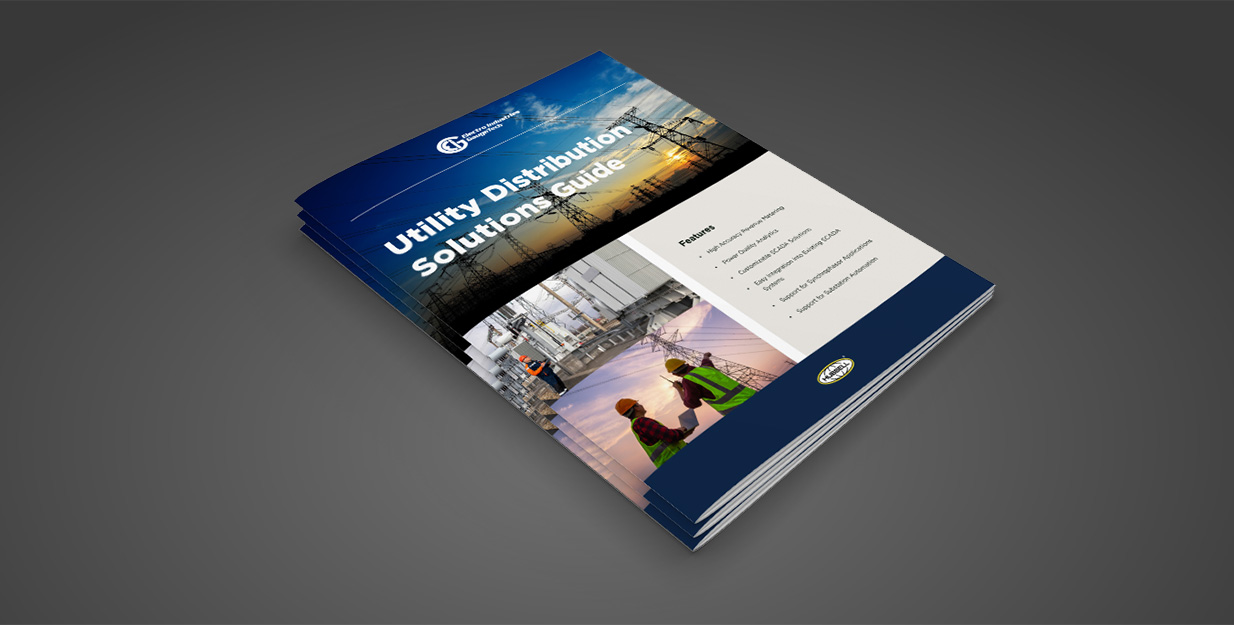
https://www.electroind.com/eigs-energypqa-com-cloud-solution-is-finalist-in-plant-engineerings-2020-product-of-the-year/
https://www.electroind.com/eig-releases-energypqa-com-cloud-based-energy-management-solution/
https://www.electroind.com/facts-you-should-know-about-commercial-energy-waste-in-2019/
https://www.youtube.com/watch?v=XTiIsF1D0Fc
https://www.youtube.com/watch?v=GAVJERWMKeU





